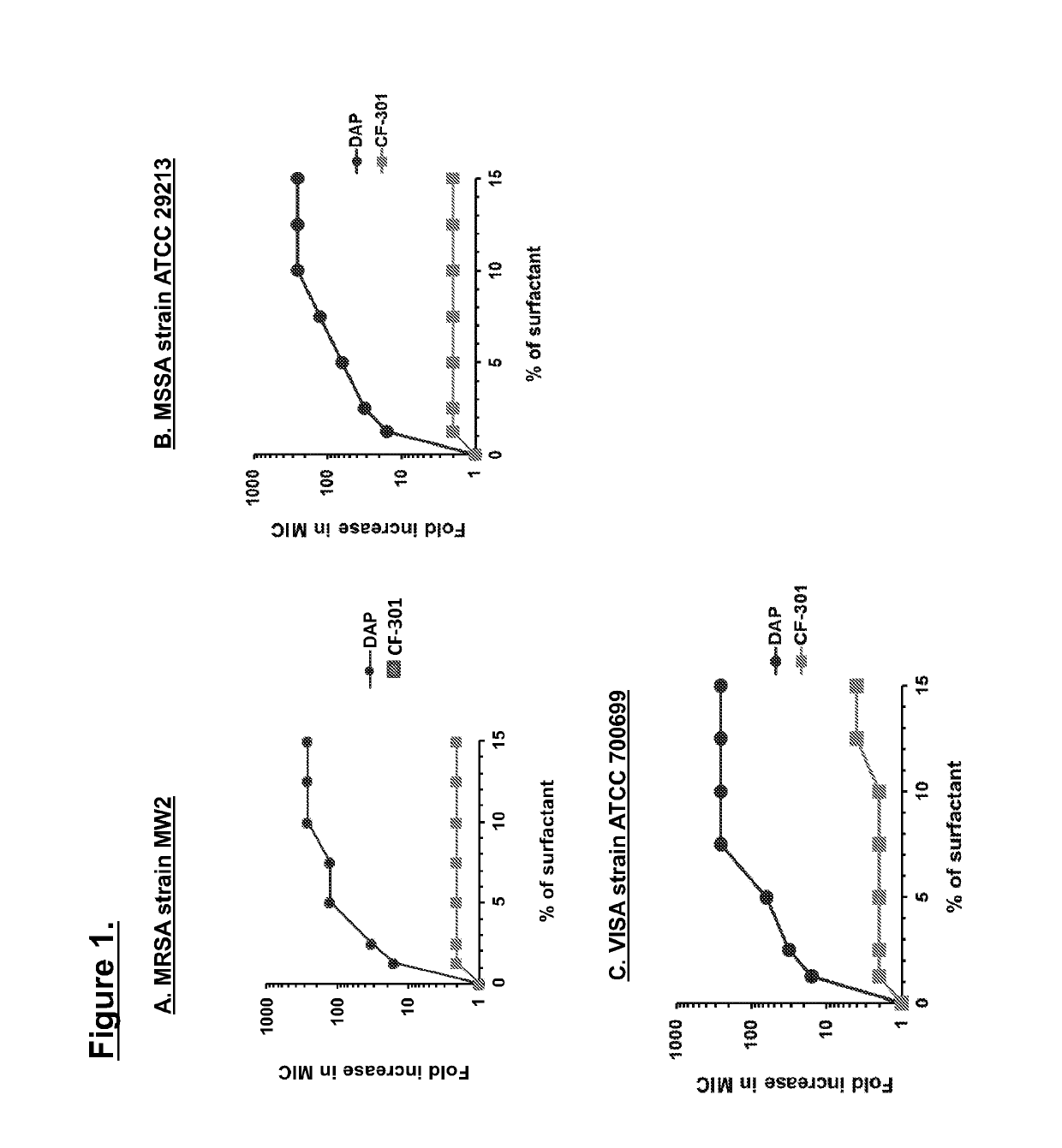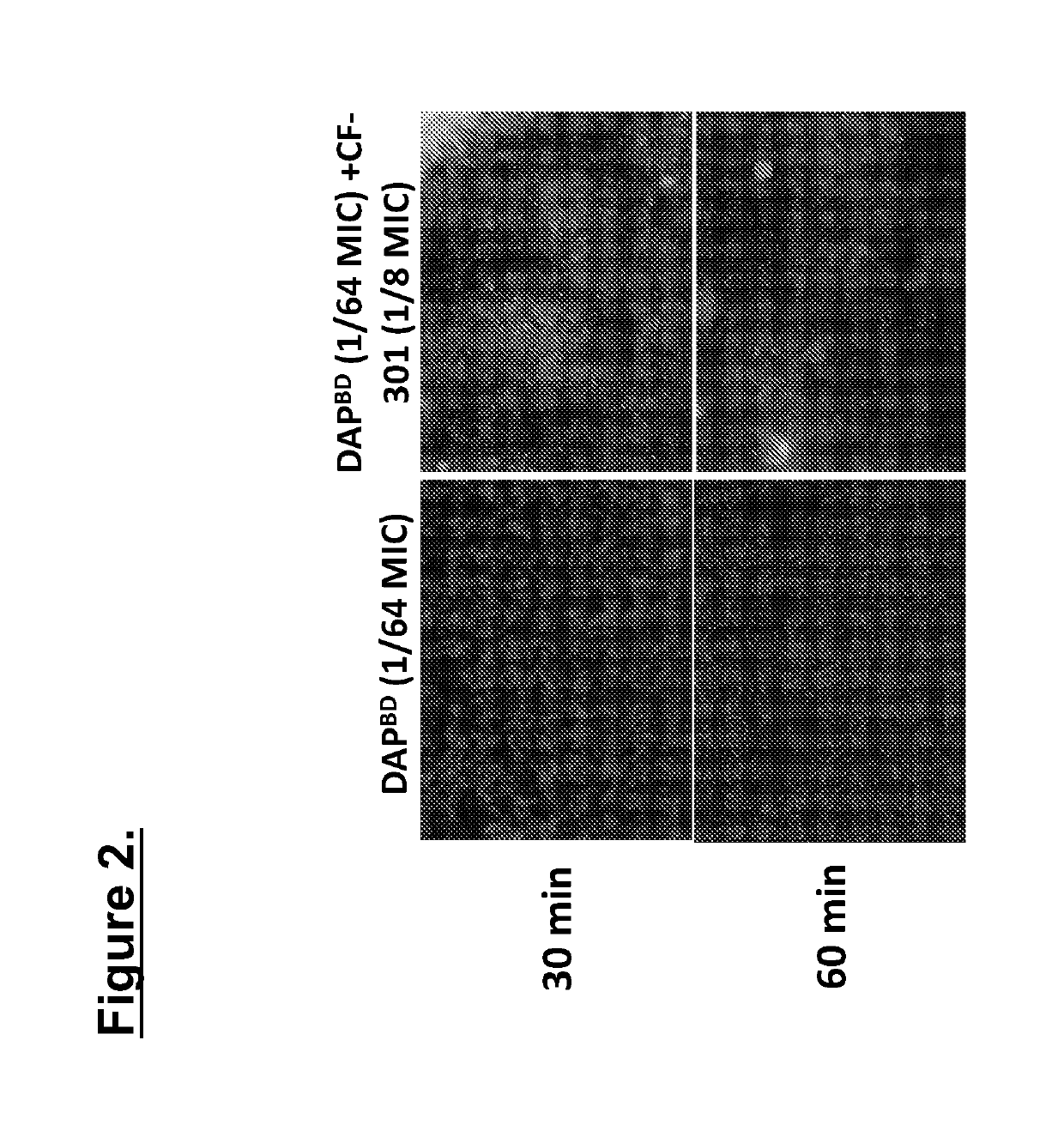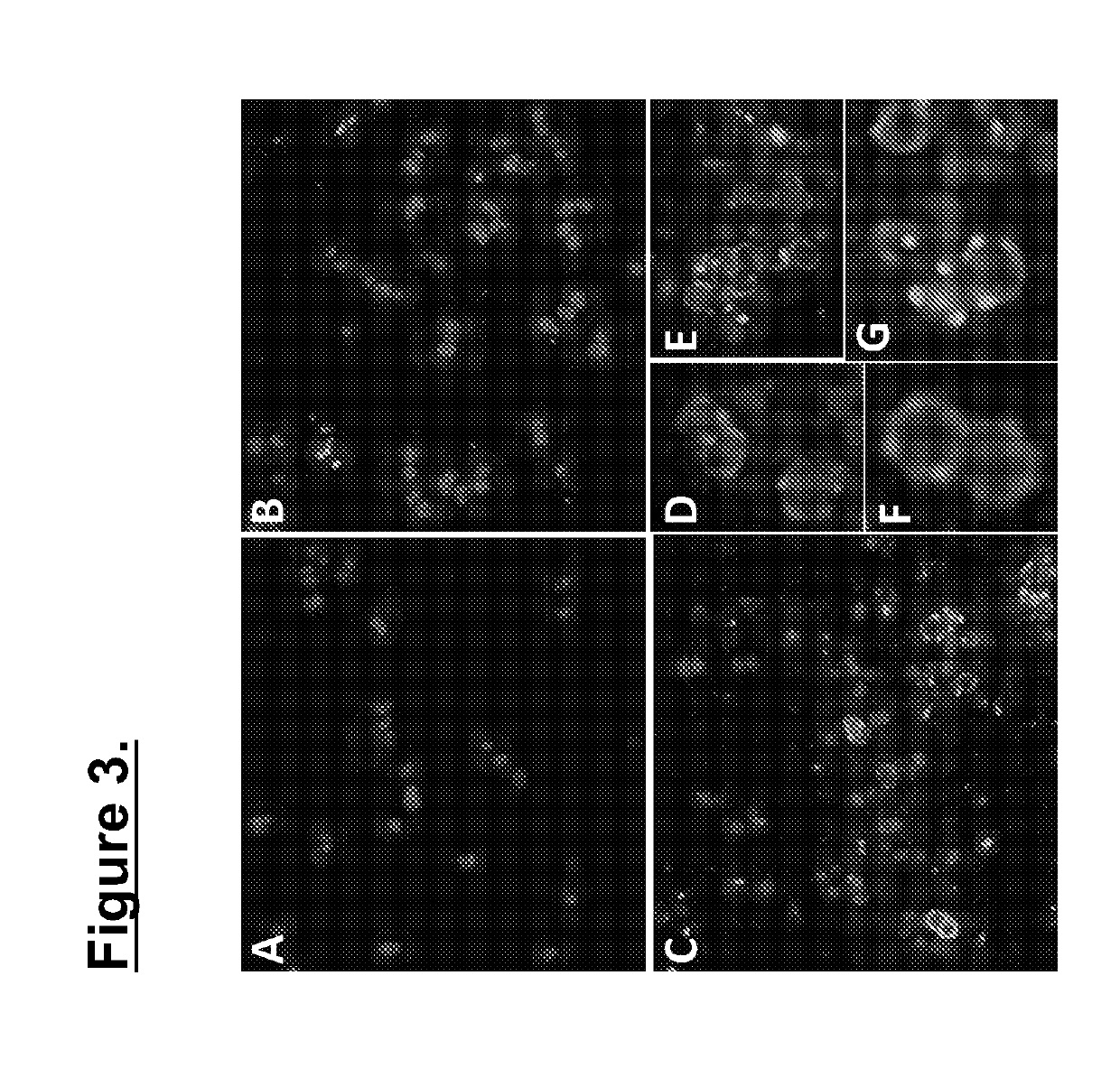Use of lysin to restore/augment antibacterial activity in the presence of pulmonary surfactant of antibiotics inhibited thereby
a technology of lysin and antibacterial activity, which is applied in the field of respiratory tract, can solve problems such as ineffective treatment of infection
- Summary
- Abstract
- Description
- Claims
- Application Information
AI Technical Summary
Benefits of technology
Problems solved by technology
Method used
Image
Examples
embodiments
[0054]In some embodiments, the present disclosure describes combining CF-301 with the antibiotic daptomycin (DAP) to expand the indications for both drugs to infections of an organ or tissue, such as infections of the airways, wherein pulmonary surfactant is present. In some embodiments, the pulmonary surfactant is expressed in organs or tissues other than respiratory system (Madsen et al. Am J Respir Cell Mol Biol., 29(5):591-7 (2000)). While DAP is a potent therapeutic option for bacteremia and endocarditis, it cannot be used for pulmonary infections because of selective inhibition by pulmonary surfactant (Silverman et al., J Infect Dis., 191(12):2149-52. (2005)). In light of clinical limitations associated with surfactant-mediated inhibition of DAP, the present disclosure describes that CF-301 restores or augments DAP activity in the lung (and other portions of the respiratory tract wherein pulmonary surfactant is present including for example the bronchial passages but also the ...
example 1
CF-301, but not DAP, is Active in Pulmonary Surfactant
[0080]In order to determine individual activity of CF-301 and DAP against different strains of Staphylococcus aureus in the presence of surfactant, the inventors tested 3 different S. aureus strains and used bovine-derived surfactant (Survanta, AbbVie Inc), which is a functional equivalent of human surfactant. Minimum inhibitory concentration (MIC) determination was preformed using methicillin resistant strain (MRSA) MW2 (FIG. 1A), methicillin-susceptible (MSSA) strain ATCC 29213 (FIG. 1B), and vancomycin-intermediate staphylococcus aureus (VISA) strain ATCC 700699 (FIG. 1C), in the presence of increasing concentrations of surfactant (FIG. 1). MIC values were determined by broth microdilution according to Clinical and Laboratory Standards Institute. M07-A9. Methods for dilution antimicrobial susceptibility tests for bacteria that grow aerobically; approved standard. 8th ed. Wayne, Pa.: CLSI, 2012. Briefly, each strain of bacteria...
example 2
DAP Activity in Pulmonary Surfactant is Permitted when used in Combination with CF
[0082]Following the findings that DAP is not active in the presence of surfactant, the inventors sought to evaluate the possibility that CF-301 promotes DAP activity in the presence of surfactant and allows DAP to excert its antimicrobial function even in the presence of a pulmonary surfactant. Antimicrobial activity of CF-301 and DAP together in the presence of surfactant was assessed using 2 different methods: combination MIC assay and the checkerboard assay. The checkerboard dilution test is widely used method for testing of in vitro synergy between multiple compounds (White et al. Antimicrob Agents Chemother. 40(8):1914-8 (1996)). Checkerboards were generated using combinations of sub-MIC CF-301 with sub-MIC daptomycin against a panel of 20 MRSA and 20 MSSA strains in 7.5% surfactant. Combination MIC assay is a variation of the microdilution method, whereby two compounds in combination (rather than...
PUM
| Property | Measurement | Unit |
|---|---|---|
| thick | aaaaa | aaaaa |
| pH | aaaaa | aaaaa |
| antibiotic resistance | aaaaa | aaaaa |
Abstract
Description
Claims
Application Information
 Login to View More
Login to View More - R&D
- Intellectual Property
- Life Sciences
- Materials
- Tech Scout
- Unparalleled Data Quality
- Higher Quality Content
- 60% Fewer Hallucinations
Browse by: Latest US Patents, China's latest patents, Technical Efficacy Thesaurus, Application Domain, Technology Topic, Popular Technical Reports.
© 2025 PatSnap. All rights reserved.Legal|Privacy policy|Modern Slavery Act Transparency Statement|Sitemap|About US| Contact US: help@patsnap.com



